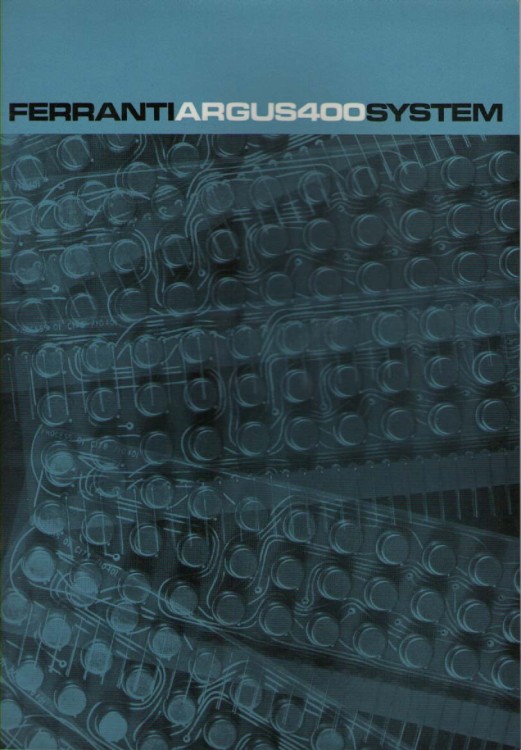Ferranti Argus 400 system
|
Ferranti's Argus computers were a line of industrial control computers offered from the 1960s into the 1980s. They were widely used in a variety of roles in Europe, particularly in the UK where they continue to serve as monitoring and control systems for nuclear reactors. The design of the Argus 400 started at the same time as the Argus 300. In logical terms the 400 was similar to the earlier 100, using serial ALUs. However, it featured an entirely new electrical system. Previous machines used germanium transistors to form the logic gates. The Argus 400 used silicon transistors in a NOR-logic designed by Ferranti Wythenshawe called MicroNOR II, with more "conventional" logic where 0 and +4.5 represented binary 1 and 0, respectively. The rest of the world however used 0 volts to represent 0 and + 2.4 (to 5) volts to represent 1. This was called NAND logic. They are in fact both the same circuitry. When Texas Instruments brought out their "74” series of integrated circuits the specification of MicroNOR II was changed from 4.5 volts to 5 volts so the two families could work together. The machine was packaged to fit into a standard A.T.R. aircraft case. Multilayer PCBs were not routine in 1963 and Ferranti developed processes for bonding the boards and plating through the circuit boards. The drawing office had to learn how to design multilayer boards (tape onto film in those days). It took around two years for the Argus 400 to go into production. This 18 page illustrated leaflet has a reference number of List ASD. 10 and is dated May 1966 but revised in February 1968. We are extremely grateful to both Dawn and Kim Wakefield for the kind donation of the collection of their late father Richard Wakefield. Date : February 1968Creator : Ferranti Physical Description : A4 booklet This exhibit has a reference ID of CH15525. Please quote this reference ID in any communication with the Centre for Computing History. |
|










